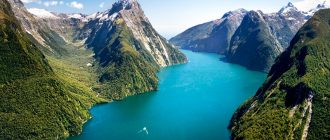Varna (Bulgaria) – the most detailed information about the city with photos. The main sights of Varna with a description, guides and cards.
Contents
Varna (Bulgaria)
Varna is the third largest city in Bulgaria (after Sofia and Plovdiv), located on the Black Sea coast. Bulgarians themselves often referred to as the “seaside” or “summer capital” of the country. Varna – the center of the resort region, a major seaport, as well as a base Bulgarian military and merchant fleet. This is one of the most dynamic and youth cities in Bulgaria, which is filled vigorous energy in the summer. Varna is a variety of museums galleries and fun attractions as well as high concentration of bars, restaurants and nightclubs. Therefore here People of all ages and interests will find fun.
- Geography and climate
- Practical information
- Story
- How to get there
- sights
- Video
- Maps and guides
- Comments and reviews
Geography and climate
Varna is located in northeastern Bulgaria in close proximity to the border with Romania. The city is in 470 km northeast of Sofia and built along the horseshoe Varna Bay, which is part of the Black Sea. To the north of Varna are the main resorts of Bulgaria: Golden Sands, Albena and others. In the vicinity of the city is located about 20 km sandy beaches. The water in the Black Sea at the height of summer warms up to 25 – 27 ° C.
Varna has a humid subtropical climate that is close to Mediterranean. Summer is relatively hot and dry. Winter soft with rare frosts. The least amount of precipitation falls in September
By the way, September is the best time to visit Varna. In that the period here is great warm weather and the water temperature averages 23 ° C.
 Black Sea in Varna
Black Sea in Varna
Practical information
- The population is 335 thousand people (2017).
- The area is 238 km².
- The language is Bulgarian.
- Currency – Bulgarian Lev.
- Time – UTC +2, in summer +3.
- Varna, in general, is quite a safe place. Should beware pickpockets in popular tourist spots and people offering exchanging money on the street (these are scammers).
- Varna has several shopping complexes and many shops on the shopping streets in the city center.
- Most bars and clubs are concentrated around the beach.
Story
Varna was founded in the 6th century BC. greek settlers like colony Odessos. Although people lived in the vicinity of the modern city still in the stone and copper age. In the 4th century Greek colony turned into a large mall that flourished thanks to trade with the Thracians. In the 3rd century, the ancient city became dependent on Macedonian kingdom and still flourished thanks to the marine trade with other Mediterranean states and cities. Later Odessos became part of the Roman Empire. Romans built here aqueduct, terms and many other structures that are still up to date practically not preserved.
In the 4th century AD a bishopric was founded here. In the same period the city became part of Byzantium. Varna was destroyed at the end of the 5th century barbarians and revived at the end of the 7th century by the Bulgarian Khan Asparuh. Until the end of the 10th century, the city was part of the First Bulgarian kingdom. From the 10th to the 14th century, Varna was part of Byzantine Empire and a major shopping center trading with Constantinople, Dubrovnik, Venice and Genoa.
 Varna
Varna
In 1391, Varna was conquered by the Ottomans, who made it coastal fortifications. In 1444 in the vicinity cities the Ottomans were defeated Hungarian and Polish troops under led by Vladislav III, who died in this battle. AT 1606 Varna was plundered by Zaporizhzhya Cossacks.
In 1828 the city was taken by Russian troops during Russian-Turkish war of 1828-1829. Although then under the conditions Adrianople Peace was returned to Turkey. Varna has been re taken by Russian troops during the Russian-Turkish war 1877-1878 and became part of Bulgaria. After the First World War War Varna was the main trading port of Northern Bulgaria. AT 1921 the city received the status of a seaside resort.
How to get there
Varna International Airport is located 8 km west of city center. It includes the following seasonal flights: London, Vienna, Berlin, Frankfurt, Glasgow, Manchester, Madrid, Milan, Brussels, Oslo, Nizhny Novgorod, Yekaterinburg, Samara and other cities. Between The airport and the center of Varna runs free shuttle.
 Port of Varna
Port of Varna
The central railway station is in a few minutes walk from the historic center. Varna has a regular railway communication with Sofia, Plovdiv, Bucharest, Prague, Warsaw, Moscow, Minsk. By bus you can get here from some other cities in Bulgaria, Greece, Romania, Turkey, Central and Western Europe.
sights
 Seaside Park
Seaside Park
Seaside Park or the Sea Garden is a huge green area, which stretches along the embankment of Varna and crashes into the city. It is a symbol of Varna and a national landscape monument. architecture. This is a favorite place for walking among residents and guests. cities. Also here is a zoo and dolphinarium.
Summer Theater, located in the Seaside Park, in the resort the season turns into a major cultural center where theater performances, operas and concerts of the locals (and not only) stars.
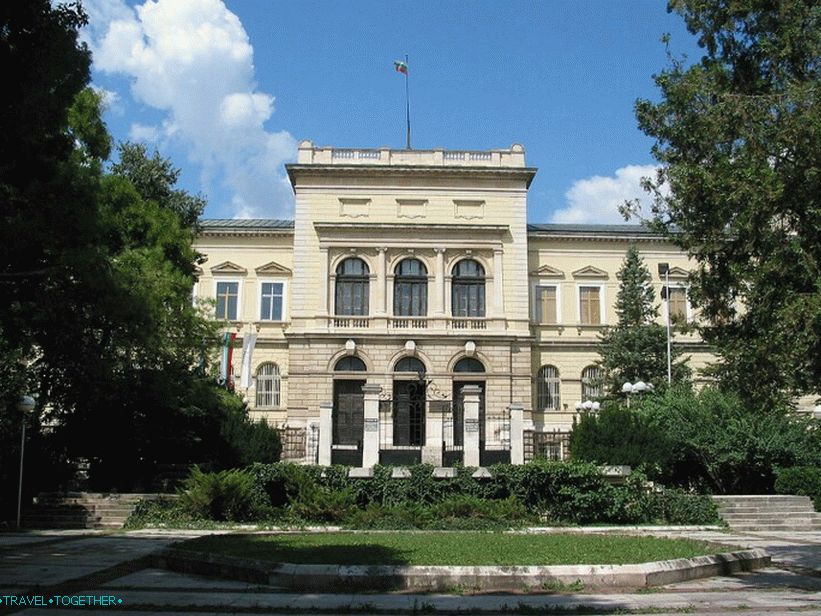 Archaeological the museum
Archaeological the museum
The Archaeological Museum is one of the most famous and interesting. museums in Bulgaria, which includes many amazing ancient artifacts. The real gems of his collection are gold and other jewels found in Thracian tombs dating from 5 millennium BC.
 Aladja
Aladja
Aladzha is an orthodox cave monastic complex founded in the 12th century. Located beyond the north-eastern outskirts of Varna.
 Assumption Cathedral
Assumption Cathedral
Assumption Cathedral – the largest temple of Varna and the main sacral monument of the city. This majestic church with shining brass domes was built shortly after the liberation of Bulgaria from the power of the Ottoman Empire at the end of the 19th century. The temple is famous for its beautiful icons that were donated by Russian emperor Nikolai Ii.
 Clock tower
Clock tower
The clock tower was built in 1888. Has a height of 24 meters and a magnificent clockwork unknown manufacturer.
Interestingly, the first clock tower was built in Varna still in 17th century. How she looked and when she was destroyed – unknown
 Holy Church Nikolay
Holy Church Nikolay
The Church of St. Nicholas was built on donations of a citizen of the Russian Empire who was a native of Varna. The construction of the temple began in 1859 and lasted 11 years.
 Roman terms
Roman terms
Roman terms – antique bath complex of the Roman Odessos, located southeast of the center of modern Varna. Terms were built in the 2nd century AD and are the largest of these structures located outside of Rome.
 Stone forest
Stone forest
Stone Forest – a strange natural phenomenon in the only desert Bulgaria It is a field of stone columns with a height of about seven meters. Columns inside are hollow and formed in the process. methane oxidation.
 Wonderful rocks
Wonderful rocks
Wonderful rocks – interesting limestone rock forms origin. This is an array of about a dozen beautiful spiky rocks located on the shores of Lake Tsonevo. Wonderful the rocks are somewhat reminiscent of the towers of the fortress.
 Evksinograd
Evksinograd
Evksinograd is a French-style palace and park complex, which was the summer residence of the Bulgarian royal family. AT the past was a monastery. Today the palace is summer residence of the President of Bulgaria.
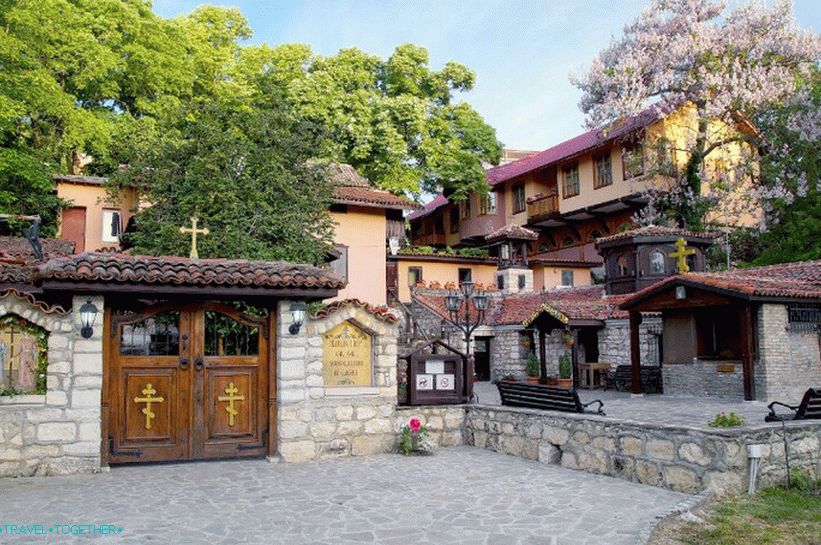 Monastery of Saints Constantine and Helena
Monastery of Saints Constantine and Helena
The Monastery of Saints Constantine and Helena is located in the heart eponymous seaside resort. There is information that monastic The brotherhood was founded here in the 16th century. The monastery was destroyed in the Russian-Turkish war of 1828 – 1829 and after restored.
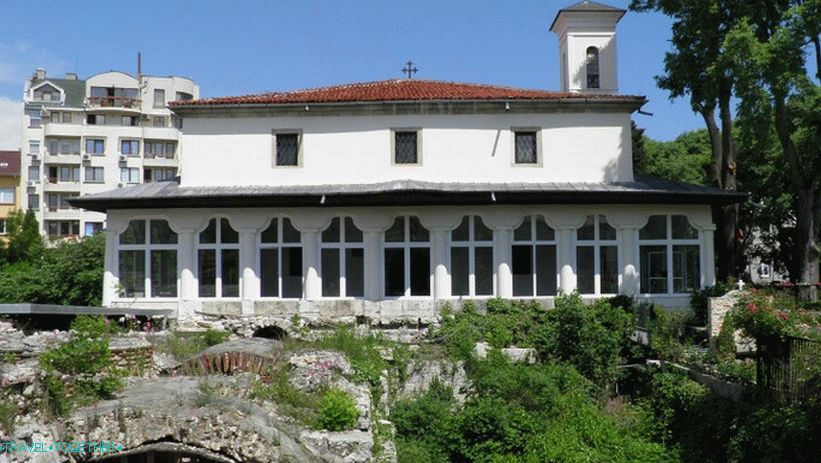 Holy Church Athanasius
Holy Church Athanasius
Church of St. Athanasius, located near the Roman term, was built in 1838 on the ruins of a small church, destroyed by fire in 1836.
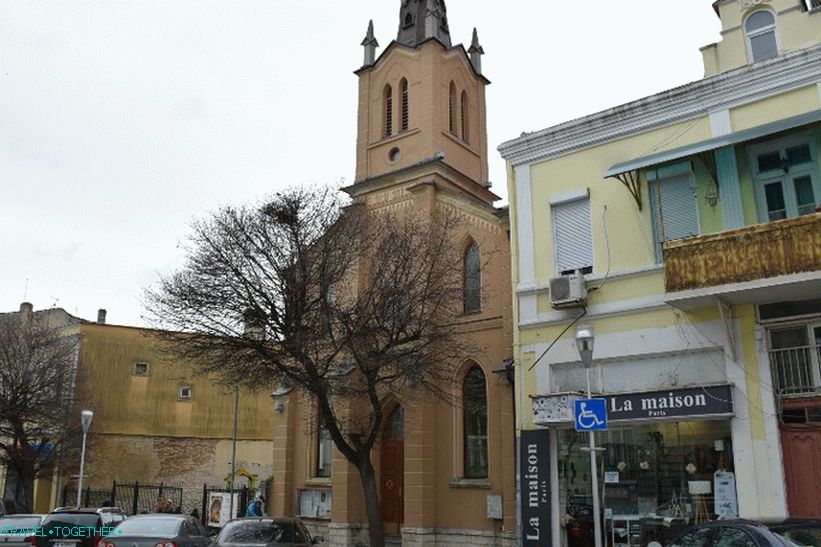 Church Immaculate Conception
Church Immaculate Conception
Immaculate Conception Church – Catholic Church in neo-gothic style built in 1890 according to the design Italian architect Valentino.
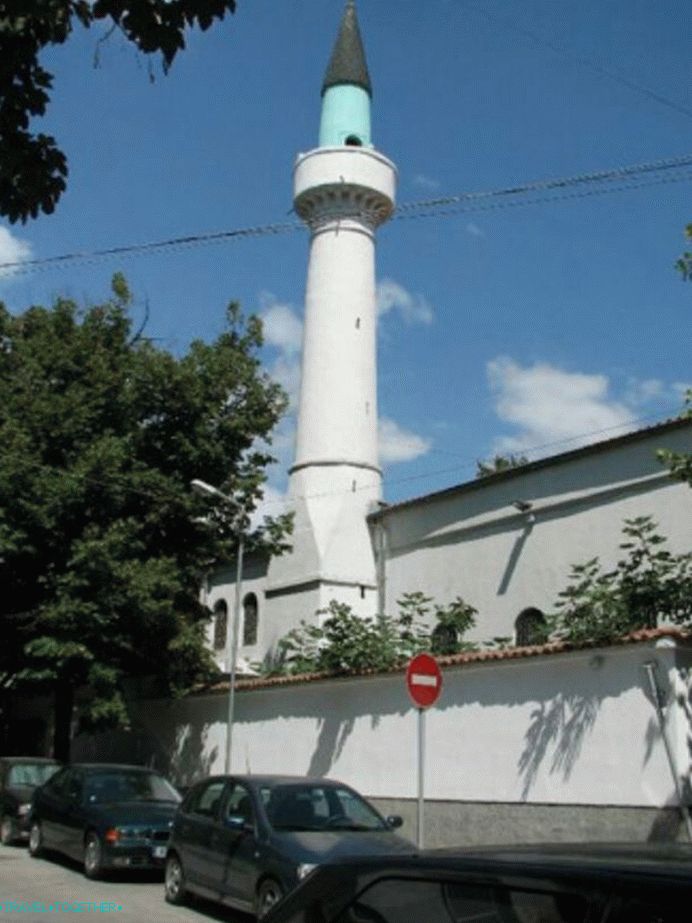 Azazi
Azazi
Azazi – a low building with a small backyard and one the minaret. According to some reports, the mosque was built in 1795 year
Video
Maps and guides
City map





